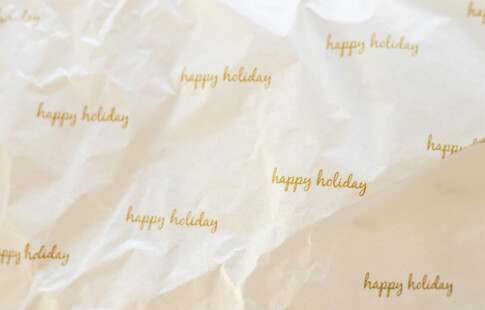
How to Compost Leaves: 5 Steps to Keep Your Pile Healthy
We are reader-supported. When you buy through links on our site, we may earn affiliate commission.
Whether fall is coming around soon or the season is seeming to come early, a yard full of leaves can be a hassle to deal with. Leaving them where they lie is possible, but using them for a compost pile can keep other plants healthy and boost a home’s curb appeal. Learn all about how to compost leaves and a few tips to help the fertilizer thrive.
How to Compost Leaves the Right Way
Not sure what to do with that massive pile of leaves after raking? Add it to a compost pile. Here are five easy steps for composting leaves.
1. Shred the Leaves
Shredding leaves is technically optional, but doing so helps gardeners get the most out of their leaf piles. Breaking them down before adding them to compost means they will decompose faster, ensuring people have access to all the great nutrients they contain sooner than with whole leaves. A leaf blower with a reverse function, a lawnmower with a bagging attachment, a leaf shredder, or a string trimmer will do the trick.
2. Create a Compost Pile
A bin is not necessary to create a compost pile, but it can make corralling the mixture easier. However, it is possible just to dig a hole in the ground, toss in the necessary materials, and put a fence around it all to keep inquisitive animals out.
3. Add Green Matter
Green matter is the nitrogen-based element of the compost pile. The leaves contain plenty of carbon, but they need materials like grass, kitchen scraps, or even chicken droppings to digest every new addition. Begin with the shredded leaves — which are brown matter — add green matter ,and continue switching off until the pile is at least 2 or up to 3 feet high.
4. Get the Compost Pile Wet
Next, dampen the materials, but do not get the compost soaking wet. Too much water causes the pile to stink and slows down the breakdown process. Toss a few more shredded leaves in if the compost is too wet, and add a few holes to the sides so the healthy bacteria has enough oxygen to decompose the brown and green matter.
5. Maintain the Compost’s Temperature and Moisture
Impressively, the compost will heat up as bacteria digest its components. After a week, it should be 110˚–140˚ Fahrenheit. Include more green materials if the temperature is any lower, and toss in a few more browns or some organic fertilizer if the materials are too wet.
After this, the pile will start to reach an average high of up to 160˚ F. Begin rotating the compost every time it peaks in temperature by moving the middle of it to the outside. The layers will mix, but they have accomplished their task at this point, so there is no need to worry about keeping them even.
Additionally, maintain the pile by adding water if it starts to dry out, including more browns if it gets too wet, and sprinkling in some greens if the core temperature is not high enough. After one to 12 months, the compost should have shrunken by half, not be getting as warm, and be brown and crumbly like dirt.
What’s the Fastest Way to Compost Leaves?
Shredding leaves is the fastest way to get them to compost. This is because the smaller pieces will decompose faster than if they stay as a whole leaf.
Luckily, for households with a bit of extra money, a light-duty leaf shredder will cost about $70 to $150. Heavy-duty ones max out at $300, but the smaller machine should be enough for at-home, small-scale composting. Otherwise, running a lawnmower over the leaves, reversing the function on a leaf blower, or using a weed whacker will do the trick.
Can You Compost With Just Leaves?
Technically, you can compost with just leaves. They have a lot of carbon, but they don’t have enough nitrogen to heat the materials and introduce biodiversity. A compost pile made of just leaves will decompose incredibly slowly.
However, gardeners can use only leaves and water to make leaf mold. This material is excellent as mulch that improves the soil. To make it, follow a similar process to making compost — make a leaf pile, water it when it gets dry, and wait about a year or until the leaves are crumbly.
What Leaves Should Not Be Composted?
Not all leaves are good for a garden or yard. Here are the ones to avoid including in compost and why:
- Black walnut: They contain juglone — a naturally occurring chemical that can suppress plant growth and seed germination.
- Oak: The leaves are quite acidic and contain lignin, which slows down decomposition. Their thickness also means they will decay very slowly.
- Holly: Holly also takes far too long to break down because of their lignin content. They are also low in nitrogen and calcium, providing little nutrition to growing plants.
- Pine: Pine needles are very acidic, so they must be added to compost piles in moderation.
- Horse chestnut: They contain moderate levels of juglone and take too long to break down, as well. The toxin in them — esculin — can also cause stomach problems with prolonged consumption.
- Cedar: Cedar leaves are tough, so they will take a really long time to turn into compost.
- Beech: Like oak, beech leaves have a lot of lignin that will majorly slow the pile’s process.
So, what leaves are good for compost? Feel free to add the following:
- Alder
- Poplar
- Elm
- Maple
- Fruit tree
- Ash
- Cottonwood
Learn How to Compost Leaves to Transform Your Yard
Turning fallen leaves into black gold is a boon for gardeners and those who love the look of a well-fed lawn. The nutrients they provide help existing plants thrive, helping ensure a sizable yield come harvest time or gorgeous flowers that burst with life. Use this guide on how to compost leaves to get the most out of the nutritious — not to mention free — fertilizer all around the yard.
Share on
Like what you read? Join other Environment.co readers!
Get the latest updates on our planet by subscribing to the Environment.co newsletter!
About the author
Maria Visser
Maria serves as the Assistant Editor of Environment.co. A true foodie and activist at heart, she loves covering topics ranging from veganism to off grid living.





